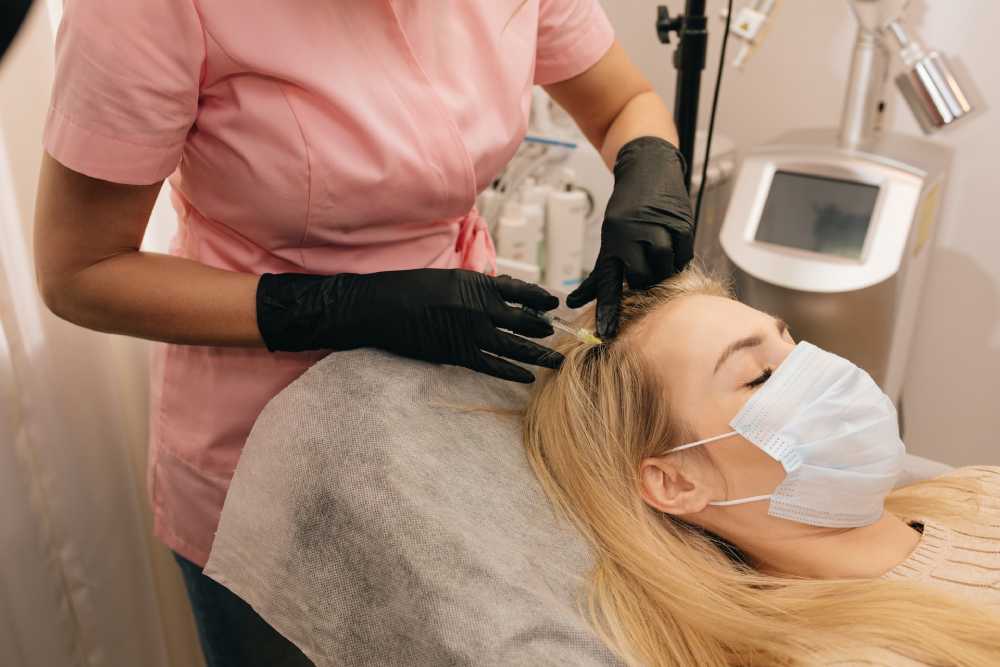Scalp micropigmentation offers transformative results for many men and women struggling with hair loss. However, navigating the financial aspects of this cosmetic treatment can take time and effort.
Choosing an SMP artist with genuine expertise and experience is critical to achieving top-tier results. Searching for a cheap SMP procedure could be counterproductive.
Contents
What Determines THE COST FOR SMP?
Most health insurance providers will not cover a scalp micropigmentation cost because it is considered a cosmetic procedure rather than one that addresses a medical condition. However, many people find that the benefits of having SMP far outweigh the financial investment.
A quality SMP treatment typically requires several sessions to achieve the desired results. As a result, the number of sessions will play a significant role in determining the overall cost of the treatment.
The complexity of the treatment will also play a factor in pricing. For example, if an individual wants to eliminate their widow’s peak or camouflage scarring, it may require more intricate and detailed work to increase the total cost of the SMP treatment.
Choosing an experienced SMP artist with a strong reputation will help you receive quality treatment at the best price. As with any cosmetic procedure, it is essential to thoroughly research the practitioner before booking an appointment.
The Practitioner’s Expertise
Scalp micropigmentation is a great way to camouflage the appearance of bald spots, thinning hair, and scars. It’s ideal for both men and women, and it can create the look of a shaved head, stubble, or a new hairline. It can also add density to a thinning scalp. It’s also helpful for people undergoing cancer treatments that cause hair loss.
A trained practitioner will use a device with tiny needles to tattoo a pattern of dots on the scalp. These dots resemble closely cut hair follicles. The treatment will last a few days, and the area will scab over before it heals. During this time, avoiding activities that can cause the area to sweat or get wet is essential. You’ll also need to moisturize the area regularly.
After the healing process is over, you’ll be able to enjoy your newly created look! Keep in mind that SMP won’t grow your hair, but it will boost your confidence and improve the appearance of your natural locks.
The Complexity of the Treatment Area
Scalp micropigmentation is ideal for men and women with thinning hair, patchy hair loss, alopecia, or scar camouflage. It can be incorporated into surgical hair restoration procedures to augment results or create a more natural-looking shaved head.
The size of the scalp being treated will significantly impact the price as each pigment application is applied to mimic the appearance of natural hair follicles. This process requires a high level of expertise. A more extensive treatment area will require more sessions and more time to complete, therefore adding to the overall cost.
The skin condition will also influence how much an SMP treatment costs. Flaky, dry, or damaged skin will require extra care and more attention than other skin types. The scalp micropigmentation technique relies on pressing on top of existing hair follicles to add density, not to replace or grow new hair.
The Size of the Scalp
An SMP treatment uses a needle-like tattoo machine to create a series of minute dots, each designed to look like short, clipped hair. Together, these dots generate the appearance of fuller, thicker hair. The procedure also works well for scar camouflage and addressing other issues, such as a receding hairline or bald spot.
However, the treatment doesn’t address the underlying cause of your hair loss, and it isn’t a permanent solution. In contrast, a hair transplant is supposed to be a life-long solution, but the failure rate is too high.
Considering your options, it’s important to weigh costs against quality. Be sure to find an artist who values quality over profit and can produce a natural-looking result. Remember that SMP requires multiple sessions and touch-up maintenance going forward to maintain the appearance, so factor these additional costs into your budget.
The Type of Pigment
There are a variety of SMP providers across the country that vary in experience levels, price points, and quality. The type of pigment used can also greatly influence the final result and its longevity.
Most SMP treatments combine different pigment hues to achieve the look of hair follicles. This mix-and-match approach allows the treatment to blend seamlessly with existing hair and create a natural-looking appearance. It also helps to create a more even distribution of color on the scalp.
Scalp micropigmentation doesn’t inhibit natural hair growth but provides a fuller and more dense appearance. It’s an excellent option for anyone looking to conceal thinning hair, scarring, or a birthmark.
It also pairs well with hair transplant procedures as it can help to cover linear follicular unit extraction (FUE) or follicular unit transplantation (FUT) scars. In addition, it can help shift the supply-and-demand ratio of existing hair follicles so that more valuable donor grafts can be reserved for areas that require augmentation.
Maintenance Sessions
Just like a tattoo, your scalp micropigmentation will fade over time. However, this fading is not a cause for concern, as regular touch-up sessions can quickly be addressed to restore the color of your hairline or cover scar tissue.
SMP is a cutting-edge solution for men and women suffering from baldness, thinning hair, or scarring. Unlike hair transplant surgeries or hair growth products, which offer limited results and can be expensive over the long run, SMP provides permanent coverage that can give you the appearance of a fuller head of hair.
The initial SMP procedure usually consists of 2-3 treatment sessions. It is essential to remember that the treatment area must be kept clean and dry. Therefore, you should avoid getting the scalp wet and using sulfate-based shampoos, hair dyes, or bleaches. It would also help if you avoided saunas, tanning beds, or chlorine-based pools.



